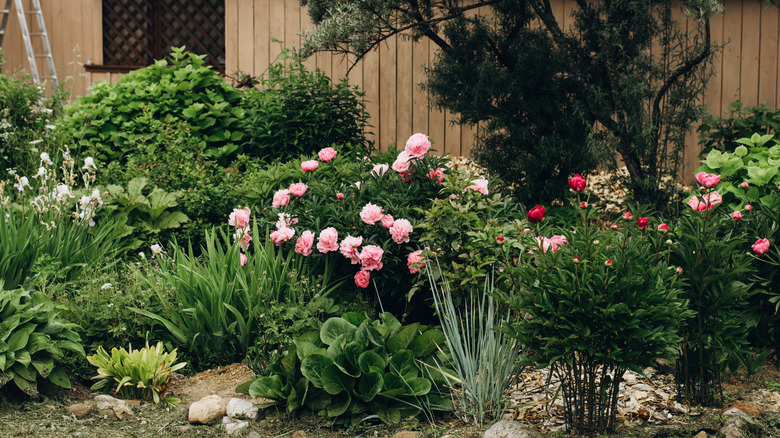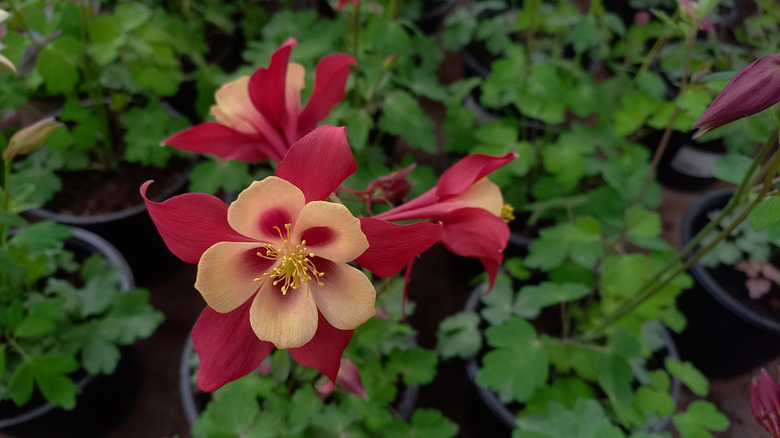Flowers You Can Still Plant In Time For Spring Blooms
If you feel like you missed the early springtime planting window, there's no need to stress about your garden. You can still plant plenty of late-spring flowers throughout your garden to provide you with vibrant, colorful blooms all the way into summer. If you're looking to fill your beds or borders with tried and true classics, lilies (Lilium spp), irises (Iris spp), peonies (Paeonia spp), and columbines (Aquilegia spp) are four timeless favorites that are generally hardy in USDA zones 3 through 8. Plant them now to achieve bright blooms by the end of spring or early summer—or even sooner depending on your zone. Whether you're filling a border, softening a walkway, or bringing life to an overlooked corner of your yard, these blooms offer a stunning mix of shape, height, and color to any garden.
Whether you're creating a pollinator garden or just want to ensure vibrant year-round blooms, each of these flowers brings a distinctive mood to your garden, whether it's a strikingly tall lily or the lush, bushy greenery of a peony plant. As a stunning springtime pick, lilies offer height and fragrant blooms for your garden, creating a space that looks and smells inviting. Irises bring structural elements to an outdoor space, with spiky foliage and ruffled flowers that look sculptured in clusters or along borders. Peonies might not be in bloom during their first year after planting, but their leafy greenery is lush and romantic, leaving a bit of anticipation for the following year. Columbines offer something softer for your garden, with small, delicate flowers that add a sense of whimsy to your garden. Whether you're working with a dedicated flower bed, an elegant walkway, or dotted between existing greenery, these plants can help your outdoor spaces feel much more intentional and organized going into summer.
Planting for the perfect late-spring blooms
To get the most out of your late-spring planting, it's all about prioritizing each flower's individual needs and preferences, but you will want to ensure that you are protecting your plants from late-spring frost. For lilies, you will want to plant smaller bulbs about 2 to 4 inches deep into the soil, whereas larger, firm bulbs should be about 6 inches into the ground. Space each plant about 12 inches apart to allow for necessary growth, and water intermittently about once a week. It should be planted in a relatively sunny area, and within a few weeks, your plants should start to sprout. Planting irises follows a similar set of preferences, often in a sunny spot in your garden with well-draining soil. The top half of the bulb should be exposed to full sunlight throughout the day to ensure that it sprouts, spacing each plant about 12 inches apart. When planting, you will want each hole to be about 4 inches deep to provide adequate sunlight and water to your plant.
To successfully grow peonies, you should plant your bushes in an area that will receive full sun in well-draining soil. The crown of the plant should be below the surface of the soil, but you will want to ensure that each plant receives ample air circulation. They should be about 3 to 4 feet away from one another to allow the plant to grow outwards. Columbines, on the other hand, are best planted as adolescent greenery, rather than starting from seeds. They should be planted in the ground after the last frost of the season, giving them plenty of time to take root in the soil. Avoid overwatering your small plant and ensure that you deadhead each flower properly.

